
Liu Xiaoming, China’s ambassador to the UK, went on BBC’s Newsnight yesterday to speak with presenter Gavin Esler (video in link). They discussed several issues — China will double per capita income of the people in 10 years, Diaoyu islands have belonged to to China “since centuries,” “it is up to the Syrian people to decide who will be their leaders,” etc. — but going along with recent themes, here’s their exchange on corruption and Internet censorship:
Liu: I think corruption is not a problem for China alone. Once you are in the period of social transformation, it’s unavoidable you’ll have all kinds of problems. Just like Deng Xiaoping once said at the beginning of opening up of China, he said, “When we open the window we’ll let in the fresh air, it’s unavoidable that flies and mosquitoes will be in.” But the important thing is how the party face up to it and adopt measures to deal with this problem. I think the leadership is resolute and determined.
Esler: Do you see things like the Internet as being like flies and mosquitoes? Do you see it as a bit of an irritation, because again, from our side, we don’t understand what you’re worried about when you want to control how people exchange information.
Liu: I think there’s a misperception about Internet development in China. In fact, the Chinese are much open in terms of Internet. In fact we have the most numbers of users in China today.
Esler: But our correspondent couldn’t even get on Facebook when he was in China. I mean, you can’t get on Twitter. It’s not quite as you present it.
Liu: In China, every day, there are hundreds of thousands of comments made by the bloggers, and 66 percent of Chinese Internet users make comments online. You know, it is up to the government to regulate these users, also in protection of the safety of the Internet to ensure that healthy content available and unhealthy content should be removed.
Esler: But isn’t that really up to ordinary people to decide? Looking at the history of your country, you’ve had thousands of years of creativity, and we see creativity as based on the free exchange of information. And part of the reasons why people in the West think you’re cracking down and being very hard on bloggers is it’s very diffuct to do for some people becasue you don’t like certain ideas.
Liu: If you are in China and can get connected in Internet, I think you can get all kinds of opinions, it’s much open. Lot of things can be debated, including politics, economics, cultural affairs. I think you have to have a big picture of development of the Internet back in China.”
Chinese Ambassador on China’s internet policy (video) (BBC)





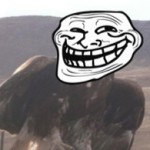

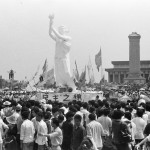
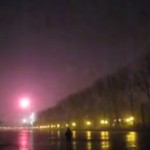









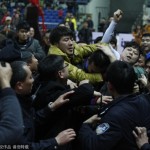
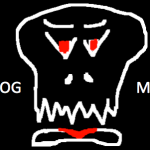

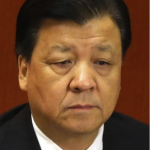
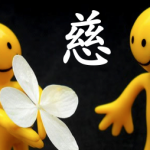






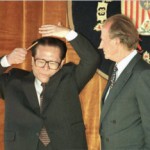



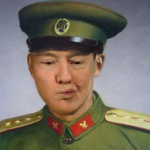




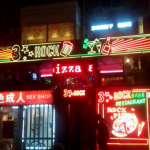




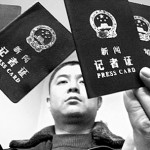

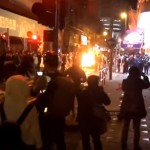

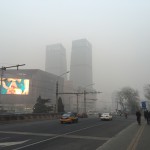

“Diaoyu islands have belonged to to China “since centuries,”” Either time runs at a faster pace in China, or he is full of shit. Which is it? China isn’t a century old yet!
Yes China as a nation state is not a century old yet. But no Chinese (in general) identify themselves solely as a nation, but the Huaxia civilization. I’m sure you know the word Hua ren to mean Chinese in Chinese, not the Anglo dictionary version of Chinese to mean China Chinese or whatever Chinese means. But, one can argue to what extent does China as a nation with passports now can claim what belongs to her. Before Qin ? Tang ? Song ? Yuan ? Qing ? After WW2 ?
I have also encountered this “debating” style many times here in China: If someone raises a point you don’t like, just ignore it. Easy peasy!
Chinese claims that the Diaoyus have belonged to China “since centuries” are often so full of holes that more than just flies and mosquitoes can get through them. For instance, the notion that the Ryukyu Islands (present-day Okinawa) once “belonged” to China, and since the Diaoyus historically have been part of the Ryukyus, ergo they are indisputably Chinese territory.
In fact, the Ryukyus were a vassal to China, and nothing more. Korea was also a vassal to China, along with other lands in the pre-modern Chinese sphere of influence. Does that mean that modern Korea also “belongs” to China?
Yeah, that’s what I thought.
The Chinese is not claiming the Ryukyu kingdom lands. The Diaoyu was part of imperial China. Diaoyu was a border marker between Ryukyu and MK .
I think what he means by century is from the Ming period, which from this perspective is quite true though. The maps of that period did show Diaoyu.
That guy is more full of shit than a bag full of shit.
Since when do Britain recognize China as a democracy. China is authoritarian and her constitution recognizes the government CAN regulate the internet.
@King Baeksu Per post-WW II arrangements, Japan was required to surrender territories obtained from aggression and revert them to their pre-1895 legal status.
“Per post-WW II arrangements, Japan was required to surrender territories obtained from aggression and revert them to their pre-1895 legal status.”
How were the Senkakus obtained by “aggression”? They were annexed peacefully in 1895 under the principle of “terra nullius,” and the Qing empire made not a peep in protest.
I suggest you read more widely than CCP propaganda organs if you want to be taken seriously.
‘Her constitution’ also recognizes freedom of speech. But don’t try to use it or you will find out how effective the Chinese constitution really is.
Anyway, the Chinese Constitution does not say anything of the sort. Someone is terribly confused…
Meanwhile, Manchuria, Tibet, Xinjiang, Inner Mongolia, and Gansu were obtained from aggression…
The Qing were the last of the dynasties. And Manchuria was so sinicised, I can’t imagine they are gonna go for independence, separated from the rest of their conquered land, including the Central Plain, Tibet and Mongolia.
In fact part of Qing’s was ceded to Russia ( I forgot which agreement it was ), so much so, that China now doesn’t have a coastline along the Sea of Japan. Check the map of the Jilin province.
@They were annexed peacefully in 1895 under the principle of “terra nullius,” and the Qing empire made not a peep in protest.
The result of the annexation is caused by the first Sino-Japanese war which WAS obtained by “aggression”. The name “Senkakus” was introduced in 1900. Qing did not protest because their hands were tied. After Japan lost WWII, they were ordered to surrender territories obtained from aggression and revert them to their pre-1895 legal status. Therefore The San Francisco Peace Treaty in 1951 is illegal and completely invalid as Taiwan and China was shunned.
@KopyKatKiller
You are comparing apples to oranges. No treaties were ever written to get them to the original owners.
Those Manchu bastards annexed Taiwan… well, 40% of it actually… Anyway, when the Qing willingly gave Taiwan to Japan, they gave away a bunch of islands too, Senkaku islands were amongst them I believe.
Jason is flinging wet egg noodles at the wall to see what sticks, and clearly has no idea what he is talking about.
Poor tiny China could obviously use some more land. Mean, terrible Japan, on the other hand, is so massively huge that it won’t miss is few little islands, will it?
Fair is fair, right?
Rolls eyes]
You know what would be great and just. If the free nations of the world blocked Chinese website access for all the Chinese embassies and consulates.
I expected a better rebuttal from you. Oh well.
There is nothing to rebut because you are ignoring my original points and mixing up historical events in a desperate attempt at emotive obfuscation. The Senkakus or Diaoyus are historically part of the Ryukyu or Okinawa island chain, which has been under Japanese control since 1872 or more than two decades prior to your magical date of 1895, so that point in irrelevant. Moreover, the Senkakus were unoccupied land at the time they were formally annexed in 1895, and privately used for business purposes by Koga Tatsushiro for some forty years. It doesn’t matter if some Chinese sailors or navigators “saw” the islands in the feudal period; what counts is modern international law, and under modern international law they are recognized as belonging to Japan. It doesn’t matter what Japan did in Taiwan or Manchuria or other parts of Mainland China up until 1945, because as I have said already, the islands are historically part of Okinawa, a fact which even China recognizes. Does China now also want to claim Okinawa? Lol, let’s see how far they get with that.
“Jason” is the Liu Xiaoming of Beijing Cream.
@The Senkakus or Diaoyus are historically part of the Ryukyu or Okinawa island chain, which has been under Japanese control since 1872
Inoue Kaoru, the Japanese Minister of Foreign Affairs and Minister of the Interior, Yamagata Aritomo from 1885 completely refutes you assertion that Japanese had control of Senkakus or Diaoyutai since 1872 as both of them claim they were from Qing Empire.
@what counts is modern international law
According to Cairo Declaration of 1943 and the Potsdam Declaration of 1945, Japan was required to return all territories previously taken from China. What the US did behind the back of China and Taiwan of signing San Francisco Peace Treaty in 1951 with Japan is deceitful and unjust.
“Inoue Kaoru, the Japanese Minister of Foreign Affairs and Minister of the Interior, Yamagata Aritomo from 1885 completely refutes you assertion that Japanese had control of Senkakus or Diaoyutai since 1872 as both of them claim they were from Qing Empire.”
I’m not sure what your sources are, but Wikipedia doesn’t count. What they actually said:
“On October 9, 1885, then-minister of Home Affairs, Yamagata Aritomo, prepared a proposal regarding the Senkaku Islands for a Daijo-kan (the Department of State for a brief period during Meiji Restoration) meeting. His stance was that because there was no evidence suggesting that “the uninhabited islands adjacent to Miyako Island and Yaeyama Island” belonged to the Qing Dynasty, it should not be a problem for the Okinawa government to construct national territorial markers on the islands. Then-minister of Foreign Affairs, Inoue Kaoru, responded that it would be better to refrain from such action until further field surveys could be completed and reported upon. Otherwise, “the Qing Dynasty might harbor suspicions.” Inoue’s judgment was clearly based on a fear of the powerful Qing Dynasty. In fact, his caution is more clearly understood in view of an incident which occurred six years later in 1891. At that time, Japan exercised its rights of acquisition through occupation on Iwo Island, only to raise the ire of Spain. Despite repeated requests from the Okinawa governor in late 1885, the decision to erect national territorial markers was put on hold.”
Source: http://www.sdh-fact.com/CL02_1/79_S4.pdf
Please stop making stuff up, my friend.
Oh, and Merry Christmas!
You source is a person who is a rightwing revisionist. It’s like given credit to Nazism. I knew you were as gullible as I expected. Pumping your chest like you actually won something.
Actually read a real Japanese academic scholar on page 106 titled “The Problematic Decision by the Japanese Government” http://books.google.com/books?id=vDpEiKR2osoC&pg=PA151#v=onepage&q=inoue&f=false
Dude, your own source concurs with what I posted above (see pg. 97; Yamagata to Inoue on 9 Oct. 1895: “…there was no indication that these islands belonged to the Qing…”). Having you been drinking too much egg nog these days? Has your mind turned to mush? More likely, it is befogged by emotion, prejudice and neo-imperial hubris. Your “logic” is a joke. Chinese nationalists = good, Japanese nationalists = Nazis? Of course the Japanese are becoming increasingly nationalist these days; they’re living right next door to a country of 1.5 billion that much of the world thinks has become an out-of-control bully. It’s called blowback, duh.
Look, what officials like Yamagata and Inoue did was spend a decade first making sure that the islands did not belong to the Qing, before formally claiming them in 1895. They were careful, patient and meticulous, as the Japanese tend to be. I suggest you follow their model, before continuing to make yourself look like such a fool.
Oh, and here’s an Internet protip for you, young grasshopper: You have violated Godwin’s law, and thus immediately forfeit the debate. For more information, see here:
http://en.wikipedia.org/wiki/Godwin's_law
Ho, ho, ho!
Then why is Nishimura annexation request denied by Yamagata Aritomo in 1885? Why did Yamagata said “this matter should not be “revealed to the news media?” Clearly Yamagata was convinced by Inoue’s advice and Inoue’s doubts of who is legally controlling the Diaoyutai/Senkakus island.
With the additional information from Suganuma, the Japanese government denied petitions to annex the Diaoyutai/Senkakus island in 1890 and 1893? These kinds of reluctances disapprove “terra nullius” claim which Suganuma stated on pp.107.
@Japanese nationalists = Nazis?
Involvement of Hitler/Nazi and Japanese nationalists has been written in various history books. Yūshūkan museum near Yasukuni Shrine disregards imperial Japanese involvement with Hitler—one of the many propaganda the Japanese nationalists are spewing.
Oh my, you really are hopeless. What part of this statement do you not understand?: “You have violated Godwin’s law, and thus immediately forfeit the debate.”
Now piss off, twit. I shall waste no more time on thee!
You don’t even understand Godwin’s Law. The law dissuade against ridiculous analogies of Nazism but NOT substantive comparisons. “Society for the Dissemination of Historical Fact” is a revisionist organization that denies massacre of Japanese war crimes and never blame Japan itself for how WWII start. This organization is a blueprint of Neo-Nazi ideology.
I won’t be bullied by a Japanese revisionist ideologue. What crap you spew reverts back to you.
In conclusion:
Japanese assertion that the island is “terra nullius” before the annexation was FALSE. The island DID NOT have control by the Japanese since 1872.
Japanese assertion that the annexation was peaceful was FALSE.
Japanese formally annex the island in 1885 after their victory against the Chinese.
Oh god make it stop!
Jason, thanks for sharing such fascinating new information with us here. I did not know that the Nazi Party existed in 1895 when Japan formally annexed the Senkakus, nor did I know that nationalist Japanese intellectuals in the 21st century consider themselves members of the Aryan “master race.”
In truth, when considering which contemporary East Asian country most closely resembles a “national socialist” model, Japan is not the first name that comes to mind.
You will note above that I suggested reading widely on this issue. I read as many sources as I can, not only Japanese nationalist sources, before coming to my own conclusions. Here, for instance, is another view from Taiwan that also supports the Japanese side on this issue:
http://www.dailykos.com/story/2012/10/01/1138332/-What-s-Really-Going-on-and-What-s-at-Stake-in-the-Senkakus
I support the Japanese side here because I have yet to see reliable evidence supporting Chinese claims of sovereignty over the Senkakus. There is a reason for that. It is because Chinese arguments on this issue simply don’t hold up. I challenge you to refute the arguments made in the above link, and if you are persuasive enough I may even change my mind. But I doubt you will be able to do that, because you are too worried that any actual arguments you present here will be quickly ripped to shreds.
For instance, you write above: “Japanese assertion that the island is ‘terra nullius’ before the annexation was FALSE.” What an interesting assertion. Are you actually claiming that Chinese lived on the Senkakus prior to Japanese annexation in 1895? If you have proof, I’d certainly like to see it.
In truth, what I expect from you is more huffing and puffing, because that’s all you got.
It’s mind-bogging why this issue is so important to Chinese nationalists in the first place.
Oh, wait, no it isn’t. No one on Mainland China believes in socialism or communism any more, so nationalism seems to be all the CCP have left, especially amidst the current economic downturn. That’s why the Senkaku or Diaoyu issue is so important here: If it all turns out to be a fraud perpetrated on the Chinese people, then the legitimacy of the CCP itself might also be called into question, and the people might actually start to wake up.
We couldn’t have that, could we?
You are still misrepresenting what Godwin’s Law really is. I neither equate Meiji period as Nazi nor equate 21st century nationalist intellectuals believing that Aryan race is better (though I would argue that Hiromichi Moteki believes that Japanese as a master race while other Asian races are below them). I am pointing out what “Society for the Dissemination of Historical Fact” is pure fantasy and their agenda is reminiscent of Nazi ideology of war aggression and denials of war events.
By citing this organization that has absolutely no credibility of Japan and China affairs, you are doing no favors on your part.
(P.S. You could have cited the Daily Kos blog and I wouldn’t use the Nazi comment since it would be frivolous).
Anyways, my primary source is a well-researched scholarly journal by Prof. Unryu Suganuma’s “Sovereign Rights and Territorial Space in Sino-Japanese Relations: Irredentism and the Diaoyu/Senkaku Islands” from University of Hawai’i Press. I
going to end this. I have said what I said. There’s nothing more I can say on this matter since we are going in circles. Goodbye.
“There’s nothing more I can say on this matter since we are going in circles.”
That’s because, like Liu Xiaoming, you simply ignore whatever points your interlocutor raises which do not serve your own agenda. And your sarcasm detector does not seem to be working very well, either.
I remain unpersuaded. Thanks for playing!
China does claim Okinawa. There were protests a few years back saying Okinawa should be “returned” to China. Here’s a more up to date story on this addition bogus Chinese claim: http://www.thejakartaglobe.com/international/chinese-nationalists-covet-japans-okinawa/549354
Anyway, all this talk about Qing Dynasty has nothing to do with China. China didn’t exist during the Qing, it was part of Manchuria.The Chinese are extremely stupid on this and other historical points.
Wow, thanks for the article. If they do start claiming Ryukyu, that is going overboard. Hopefully they don’t.
You talk big but you give two sources that is the biggest joke of them all. One is war crime sadist propaganda organization (even calling Inoue, a Marxist, as an epithet) and the other one is a blog citing another blog by an amateur. Both completely unreliable to any of your points.
I can’t take you seriously. You have no respect of actual FACTS on your brain-fart sources. FYI a scholarly journal from a REAL academic would be a good choice of backing your point. It’s too late. You already dig a bigger hole for yourself.
It’s really too bad to see Liu Xiaoming making such weak arguments like this. If you are going to go on the BBC and trump ideologies that are fundamental to liberal democracies, at least do your homework and present something somewhat thought-out.
What’s funny about this whole thing is that China pretty much screwed itself here through idiocy. Don’t know what the final result will be so screwed itself is a bit strong, but look at how this all went down.
First, China makes an arrogant, outrageous claim to the Scarborough Shoals. There is absolutely no basis for this, but China still acts like a petty bitch about it, cutting off trade and travel, holding up goods in customs, gearing up the propaganda machine, and all the passive-aggressive crap you have come to expect from the corrupt leadership. Anybody from Norway can tell you about it.
Then, when everyone is pointing out that China is acting like a bully and making shit up about what claims it might *actually have* in the South China Seas (see, our name is there so it must all be ours), they shift everything to the Diaoyu mess. Way to set things up peoples! You genius, you is.
For some watching the propaganda, it may have been an imperceptible shift, like that scene in 1984 where the enemy changes in the middle of the rally.
China’s claim to Diaoyu is a hundred times better. Nonetheless, from an international perspective, this is just another example of China making shit up, just like last time. Classic boy who cried wolf.
Of course the scary thing is this is just the leftists trying to destabilize the country and rally the chuckleheads so they can hold on to their own power. Those corrupt torturers would cut the baby in half in a second if it was to their personal advantage. Need another villa!
Politics aside—and the following may have been mentioned in the myriad links posted throughout this thread—but I’d like to add that this ongoing flap isn’t necessarily all about historical claims, national honor or territorial sovereignty or whatever else. The leaders of all sides know this: They just use these as easily-digestible buzzwords to fire up their respective populaces into flag-waving, froth-flecked hordes so that they have the winds of the public at their backs.
It’s all about the potentially lucrative oil and gas reserves located in the surrounding area. And for China, it’s another feather in their cap when it comes to their goal of dominating the region’s waterways.
That’s the bigger story here—an emboldened China flexing her muscles and riling her neighbors. Screw historical ownership and competing claims: Shit’s gonna get real within the next decade and I wouldn’t surprised to see increased scuttles between the Middle Kingdom and some of her weaker neighbors, namely the Philippines, who aren’t playing ball like the rest of her southeast Asian seabuddies.
This. The only real goal here is to divert attention away from the terrible economy, the terrible environment and the terrible lack of freedom/gap between rich and poor, which are completely intertwined.
Also too, the many many rich and connected bailing like rats from a sinking ship. Not to indicate I think those people are like rats, not at all. They are being very, very reasonable and wise in doing so.
The shiznit will be hitting the fan eventually and I am afraid its going to be quite ugly. Within a decade is a good estimate, but it could come much sooner too.
BTW, here is a page from the Japanese Ministry of Foreign Affairs responding to various Chinese arguments claiming sovereignty over the Senkakus or Diaoyus:
http://www.mofa.go.jp/region/asia-paci/senkaku/qa_1010.html
I have searched for something similar in English on the Web site of the PRC’s Ministry of Foreign Affairs but can find nothing comparable; a search of the term “Diaoyu” brings up 190 press releases, mostly. Clicking on the article “Diaoyu Dao: A Moment of Truth” by Chinese Ambassador to Malta Cai Jinbiao, for instance, brings up the notice, “Sorry, the page you requested cannot be found.” Where is an official, comprehensive Web page stating the PRC’s position on this issue in English? Sorry, but I don’t think most researchers are going to want to click through 190 articles of boilerplate press releases. They need to make things more convenient for interested parties.
I have often discussed this issue with many local Chinese and always tell them at the outset, “If you can persuade me that the Diaoyus belong to China and present convincing evidence in support, I will accept your position.” So far, none of the people I have spoken with in person have been able to do so. They are convinced that the Diaoyus belong to China but are unable to articulate why exactly. They just “know,” and seem to feel that that is good enough. It isn’t. Meanwhile, when I start asking questions like, “Why did the People’s Daily state that the Diaoyus were part of Okinawa in 1953?” and so on, they are usually unable to answer because they have never heard of such information before.
As others have noted, what we have here are conflicting views of the world and China’s place within it. In Chinese, China means “Middle Country (or Kingdom),” reflecting a traditional belief that Chinese was or is the center of the world, or at least the Asian sphere over which it felt it presided. In English, the name “China” derives from the Chinese character for “Qing,” reflecting the fact that it was during the Qing Dynasty that China emerged internationally under the modern nation-state system of Westphalian sovereignty. Japan was apparently the first Asian nation to assimilate itself fully into this Western system of nation states, and its incorporation of the Senkakus, in accordance with modern international law, reflects an embrace of this particular world view. By appealing to premodern, Sinocentric notions of sovereignty in its claims over the Diaoyus, China appears to want to have its cake and eat it, too: “We refuse to recognize modern international law when it is convenient for us to do so, such as when Japan claims that the Diaoyus were ‘terra nullius’ in 1895, yet we will appeal to modern international law, along with premodern, Sinocentric notions of sovereignty, to convince the world that the Diaoyus belong to us.”
It’s a tricky line that China seems to be walking here. China’s selective interpretation of what constitutes modern international law could have very wide-ranging implications, and set any number of dangerous precedents, and possibly risk alienating many of its neighbors — to say nothing of the rest of the world.
Is it really worth it? How far is the PRC willing to go down this path?
@“Why did the People’s Daily state that the Diaoyus were part of Okinawa in 1953?”
And Okinawa at that time was in US control. The US in 1971 would revert back to it’s original owner which was Taiwan (the real China in US’ eyes) but couldn’t since Taiwan lost it’s UN seat (Nixon wanted a better ally to defeat Soviet Union). Giving it to PR China would be a blowback to US strategic maneuver in Asia.
@I have searched for something similar in English on the Web site of the PRC’s Ministry of Foreign Affairs but can find nothing comparable
Comparable against what? MOFA’s page seriously needs an update. Most of their claims are debunked thoroughly by academia as well as Prof. Unryu Suganuma from showing the year that maps were PRINTED while omitting what year the maps were actually showing, claiming the dubious 1971 year where China showed interest, claiming the bogus ‘terra nullius’ and this cautiously maneuvering (that has been debunked by Suganuma repeated), etc.
You didn’t convince me but if you keep trying you might. Come on, give more effort pls.
“The US in 1971 would revert back to it’s original owner which was Taiwan (the real China in US’ eyes) but couldn’t since Taiwan lost it’s UN seat (Nixon wanted a better ally to defeat Soviet Union).”
Source, please. Preferably official U.S. documents. Everything I have read online indicates that the U.S. in 1971 strongly believed that Japan had the stronger claim over the Senkakus.
Also, please show me where and how the Japanese MOFA’s claims have been “debunked.” You have a poor habit of making assertions rather than arguments. Persuasive in your own mind, perhaps, but not in the minds of many others.
Regardless, you have ignored my basic request, yet again Mr.Liu: Where is an official, comprehensively argued Web page showing the PRC’s position on this issue? Up to this point, everything you have said basically boils down to this: Whatever Japan claims is wrong (and please just believe me when I say it is), and therefore that proves that the Diaoyus belong to China.
Again, not very persuasive at all.
@Source, please. Preferably official U.S. documents.
According to Koji Taira of Japan Focus, he cited Qiu Hongda which Qiu suggests in “Diaoyutai Lieyu Zhuquan Zhengshi Wenti Jiji Jiejue Fangfa de
Yanjiu” (Study of the Disputed Sovereignty over the Diaoyu Islands Problem and Its Resolution that the <> contains wording implying that the ROC did control the Diaoyu Islands. Article 7 stipulates:
“The Government of the Republic of China grants, and the Government of the United States of America accepts, the right to dispose of such United States land, air, and sea forces in and about Taiwan and the Pescadores as may be required for their defense as determined by mutual agreement.”
Hongda, Qiu. highlights the word “about” to indicate (though not explicitly) the surrounding seas under the ROC’s control. Later, according to Qiu, the ROC and the U.S. agreed to place under the U.S. forces’ patrol the area some miles north of Taiwan, meaning that the ROC had consented to U.S. forces patrolling the area around the Diaoyu Islands. (Qiu, p. 28)
This is an extremely fine point. One can well imagine the spectacle when the three disputants present and defend their claims before an arbitral or judicial authority.”
@Also, please show me where and how the Japanese MOFA’s claims have been “debunked.”
Q1 Debunked by Suganuma (not until 1885 where Japanese won the first Sino-Japanese war that the island was OFFICIALLY controlled by Japan. All the previous annexation petitioners before 1885 was revoked by Japanese government )
Q2a. True
Q2b Hardly “historically and consistently” (see Q1) When Japan annex the island in 1885 the island was put in Okinawa prefecture. Claims of “terra nullius” or Qing never claimed the island is false (see previous posts)
Q3a. This story about a resident of Okinawa Prefecture is more proof that Japan is seriously inserting their foot in their mouth. The lease approval granted on 1896 but not getting approved before 1885 (after the takeover and the control)
just shows that “terra nullius” claim is dubious beyond belief.
Q3b. That’s not what the Home Ministry wrote in May 1894, “Ever since the islands were investigated by persons dispatched by police agencies of Okinawa back in 1885, there have been no subsequent field surveys conducted.”
Q3c. ” Japan could not exercise direct control over the Islands until the administrative rights were reverted to Japan on May 15, 1972. However, even during this period, the Islands remained as part of the territory of Japan, and this legal status of the Islands” claim is false (see Qiu Hongda above)
Q3d Whatever.
Q4a Same old repeated assertion that is thoroughly being debunked (see previous post of their reluctance before 1885.) Even Koga Tatsushiro which from your previous post, the first Japanese native to lease the islands, he attributed Japan’s possession of the islands to “the gallant military victory of our Imperial forces.”
Q4b “it is only since the 1970s that the Government of China and the Taiwanese Authorities began making their own assertions about the Senkaku Islands”– Han-Yi Shaw and Unryu Suganuma has pointed out from their various research that this is not true.
“China has never explained why it had not expressed objections.”– That is the biggest bullshit MOFA has EVER stated. China and Taiwan protested the 1951 SF Treaty.
Q4c 1885-1951 (Japanese occupation of the island) 1951-1972 (US occupation of Okinawa therefore sole owner. The maps were showing the years between foreign occupation. It never printed foreign occupation that shows after 1972.
Q5a “while ascertaining carefully that these islands had not only been uninhabited but also showed no trace of having been under a control of any state including China.”–
1. “Carefully” means that in 1885 where Japan defeated China.
2. The same old “terra nullius” claim is debunked.
Q5b “None of the arguments that the Chinese government or Taiwanese authorities have presented as historical, geographic or geological grounds is valid evidence under international law to support the Chinese assertion of its territorial sovereignty over the Senkaku Islands. ”
None of Japanese claims are true according to Suganuma and Shaw.
Q5c All the years falls between these year of foreign occupation: 1885-1951 (Japanese occupation of the island) 1951-1972 (US occupation of Okinawa therefore sole owner. No sure what proof is there to see. More like desperation.
Q6a “From 1885, the Government of Japan thoroughly conducted surveys” (see Q3b.)
“confirmed that the Senkaku Islands had been not only uninhabited but showed no trace of having been under the control of the Qing Dynasty of China.” (see Suganuma break apart the “terra nullius” claim from previous posts)
” Cabinet Decision on January 14, 1895, to erect markers on the islands to formally incorporate the Senkaku Islands into the territory of Japan.”
Shaw explained why: In December 1894, after China had suffered some devastating defeats in the war, a secret document from Japan’s Home Ministry stated, “the situation today has changed significantly since back then.” The Meiji government accordingly incorporated the islands based on a Cabinet decision on Jan. 21, 1895, while the war was still underway. This was never made public and remained unknown to China.
“t is only since the 1970s that the Chinese government began to make its own assertions over the Senkaku Islands.” (see Q4b)
Q7a Yes the Treaty of Shimonoseki does not clearly define the geographical limits of the island of Formosa and the islands appertaining or belonging to Formosa ceded to Japan by the Qing Dynasty of China. BUT calling it “Senkakus” Island is a stretch since the name “Senkakus” was applied in 1900 not during the drafting and signing of the treaty.
Q7b “Japan had already undertaken preparation, from 1885, even before the Sino-Japanese War” (Not true: see Q5a)
“Following the Cabinet Decision in January 1895, which was made before the concluding of the Treaty of Shimonoseki”
True but the ongoing war was still in process as Japanese was about to win against the Chinese.
“absolutely no discussion on territorial sovereignty over the Senkaku Islands in the process of negotiations for the Sino-Japanese Peace Treaty.”
Indeed there was no discussion over the Senkaku Islands for the Treaty of Taipei. But since Japan doesn’t control Senkakus island at that time and also the Treaty of Taipei was ratified on August 5, 1952 (US had already controlled for 4 months), I believe that Senkaku Islands was off the table since it has already been incorporated into Okinawa since 1885 and US didn’t want that.
Q8a “Rather, the document shows how Japan proceeded with the process of incorporation carefully and cautiously on the premise that the Senkakus did not belong to Qing Dynasty.”
As Suganuma stated “Any decisions by the Japanese government regarding the Diaoyu Islands during the era of the Meiji Constitution cannot be regarded as the state policy unless the Japanese emperor explicitly and unequivocally confirmed it in his imperial edict.” Since Japanese emperor hasn’t confirm it, the process of incorporation is being exaggerated and unfounded.
@the interior minister said to the effect that the Senkaku Islands showed no trace of having been under the control of the Qing Dynasty.
Yet Nishimura annexation request was denied by Yamagata Aritomo in 1885. Why did Yamagata said “this matter should not be “revealed to the news media?” Clearly Yamagata was convinced by Inoue’s advice and Inoue’s doubts of who is legally controlling the Diaoyutai/Senkakus island. Also the Japanese government denied petitions to annex the Diaoyutai/Senkakus island in 1890 and 1893.
…continued
“This is an extremely fine point.”
Translation: The Pescadores are not the Senkakus. Try again, champ.
“Claims of ‘terra nullius’ or Qing never claimed the island is false (see previous posts).”
Lol, now you are citing yourself as an authority? You have never proven that it was not “terra nullius,” you have merely asserted it. Get the difference?
Please stop saying, “Someone said this or that” or “someone said that someone else said this or that” and then consider the argument done. Please either show me a link or argue yourself why the Senkakus were not terra nullius prior to 1895. Just because some Chinese trade mission spotted them when passing by does not constitute “ownership” in my book.
It’s rather wearisome debating with you because you keep ignoring points I have already made above without refuting them. For example, I have already stated why the Japanese waited ten years before formally annexing the Senkakus, and it was not because they thought the islands belonged to the Qing. Moreover, your presentation style leaves much to be desired. Do you seriously expected people to toggle back and forth between the Japanese MOFA’s site and this comment thread to get the points you are talking about? You have to make things a lot more simple and clear. Remember, you are not trying to persuade yourself. You are trying to persuade the average reader on this site, and anyone who looks at the jumble of text in your previous comment is simply going to roll their eyes and proceed to Laowai Comics instead.
Q9 @the Government of Japan made a Cabinet Decision on January 14, 1895, to erect markers on the islands to formally incorporate the Senkaku Islands into the territory of Japan. These measures were carried out in accordance with the ways of duly acquiring territorial sovereignty under international law (occupation of terra nullius).
See (Q6a)
Q10 It was kept secret because it was illegal. See (Q8a) since Japanese emperor never confirmed it in his imperial edict.
Q11 According to Gary Leupp, “in the spirit of Cairo and Potsdam, the Diaoyu islands between the Ryukyus and Taiwan might have been returned to Chinese control at the end of the war in 1945. Instead the U.S. military treated them as the defense perimeter of the occupied Ryukyus, in effect recognizing the legitimacy of the Japanese claim. In other words, while denying Japanese sovereignty over the Ryukyus, which had been established in 1872 in relatively peaceful fashion, the U.S. recognized the incorporation of the Diaoyu isles into Okinawa Prefecture dating to 1895, established (let us repeat) as the result of a predatory war. It apparently did not regard these islands as “territories…stolen from the Chinese” to be “restored to the Republic of China.”
Q12 The PLA article treated Ryukyu as an independent country and does not belong to Japan.
Q13a “Before the decision was made based on the San Francisco Peace Treaty, neither China nor Taiwan had claimed sovereignty over the Senkaku Islands.”
That’s debatable.
Q13b “1970s claim where China showed more interest” dubious claim . (See Q4b.)
Q13c “justifiable” Evidence of non approval by the Japanese emperor in 1885 and US dictates what island goes to whom in SF Treaty doesn’t sound justifiable.
Q14: Omitted is then Vice-Premier Deng Xiaoping said: “Our generation is not wise enough to find common language on this [Diaoyu/Senkaku] question. The next generation will certainly be wiser. They will surely find a solution acceptable to all.”
We, the people of the 21st century, are the “next generation.” Although it is doubtful that we are any wiser than our predecessors, we can at least try to improve our understanding of these issues.
Q15 The US does not have the right to dictate the island.
Q16a “no doubt whatsoever that the Senkaku Islands are an inherent part of the territory of Japan” There are various doubts that refutes this claim which I mentioned above
@The Pescadores are not the Senkakus. Try again, champ.
Nor did I suggest Pescadores are the Senkakus. I was suggesting Taiwan (or Formosa). Koji Taira said the ambiguity of Treaty of Shimonoseki “fails to specify whether “Formosa” is understood to include those “islands appertaining or belonging to Formosa” The basic confusion hinges on whether geography or administration is the primary criterion determining jurisdiction over the islands. If in place of “Formosa and the Pescadores” an expression were used referring to all the areas under the jurisdiction of imperial Japan’s governor general of Taiwan, there would be no ambiguity over what islands should be included in “Formosa and the Pescadores.” The criterion of administrative jurisdiction would also clearly leave the Senkaku Islands out of “Formosa and the Pescadores,” keeping them within the purview of the former Okinawa Prefecture, re-named the Ryukyu Islands during the period of American occupation.”
@Please either show me a link or argue yourself why the Senkakus were not terra nullius prior to 1895.
Suganuma pp.107 as I stated a while back ago.
“The PLA article treated Ryukyu as an independent country and does not belong to Japan.”
That’s nice. Did they bother to ask Japan or the people of Okinawa how they felt about it?
@Did they bother to ask Japan or the people of Okinawa how they felt about it?
That still doesn’t deters that MOFA distorted the article which MOFA stated “explicitly included the Senkaku Islands among the Ryukyu Islands.”
“Suganuma pp.107 as I stated a while back ago.”
This is why you fail at the art of persuasion. Pg. 107 is unavailable in the link you provide above. Why is it so hard for you to state the basic argument in plain simple language, in your own words? Do you expect me to fly out of the country and visit some library in the U.S. or Tokyo and then get back to you?
As for the Treaty of Shimonoseki, the Senkakus had nothing to do with that. The Senkakus were formally annexed in January 1895, or several months prior to the signing of the Treaty of Shimonoseki. Indeed, Japan began its investigation of the Senkakus a decade earlier, well before the First Sino-Japanese War.
You are turning Beijing Cream into your own personal blog and much of what you write is rambling and incoherent. What I suggest is that you write your own article on your own blog stating why the Diaoyus belong to China, and then you can provide a link here for those who may be interested.
I have a lot of work myself to do, and I am moving on because I do not feel that you are arguing in good faith, and because your debating style is tiresome. In short, you are a classic Nutizen troll with a very blunt ax to grind. Good luck with that — I doubt you will win many converts with your present approach.
@ Why is it so hard for you to state the basic argument in plain simple language, in your own words?
From December 25, 2012 at 10:12 am, I wrote:
“Then why is Nishimura annexation request denied by Yamagata Aritomo in 1885? Why did Yamagata said “this matter should not be “revealed to the news media?” Clearly Yamagata was convinced by Inoue’s advice and Inoue’s doubts of who is legally controlling the Diaoyutai/Senkakus island.
With the additional information from Suganuma, the Japanese government denied petitions to annex the Diaoyutai/Senkakus island in 1890 and 1893? These kinds of reluctances disapprove “terra nullius” claim which Suganuma stated on pp.107.”
or go to pp106 here: http://books.google.com/books?id=vDpEiKR2osoC&pg=PA107#v=onepage&q=inoue&f=false and scroll down to 107
@As for the Treaty of Shimonoseki, the Senkakus had nothing to do with that.
Whether the Diaoyu Islands, which were not called Senkaku by Japan until 1900, are implied in “islands appertaining or belonging to said island of Formosa” is an unsettled question and quite murky as you expected rather than saying “the Senkakus had nothing to do with [Treaty of Shimonoseki]. “
“Clearly Yamagata was convinced by Inoue’s advice and Inoue’s doubts of who is legally controlling the Diaoyutai/Senkakus island.”
Doubts are not certainties, and pg. 107 of the holy book you keep referencing does not appear online, as I have already stated. Is English not your first language?
In any case, happy New Year. I predict that by this time next year, the Senkakus will still be Japanese territory, and much of the rest of the world will continue to believe it because unlike so many Chinese, the Japanese actually do know what the “art of persuasion” means.
Clearly, you don’t.
@ Is English not your first language?
Overreacting much? Either Google Books isn’t available in your country or you don’t know how to use it since pp 98-104 are not shown but pp 106-108 is shown on my computer. I’m not going to type two long paragraphs and since I have already paraphrased it.
Google “decided to annex the Diaoyu islands and build the landmark. Evidently”
I live in China. That page is not coming up on my computer.
Look, if you can’t even paraphrase two paragraphs, you’re either lazy or intellectually challenged.
I vote for the latter.
@if you can’t even paraphrase two paragraphs
Are you blind?
Lol. I have yet to see any proof on this thread that the Qing controlled the Diaoyus prior to 1895, and that includes everything you have posted in reference to Suganuma so far.
You keep saying, “I did this and that” and seem to believe that’s the end of the story. Yes, my vote was right!
Since the Ming dynasty, both Chinese and Liuqiuan Kingdom officials used the Chinese language to identifiy the Diaoyu Islands. Use of Japanese names identifying the Diaoyu Islands did not appear in existing literature until the 20th Century.
The reluctance of the Japanese government (1st: rejecting Nishimura annexation request in 1885. 2nd: denied petitions to annex in 1890 and 3. 1893.) during the process of building the territorial landmark reflects the fact that the government realized the Diaoyu Islands were not terra nullius.
Therefore, the self-proclaimed rediscovery of the Diaoyu Islands by Koga Tatsushiro cannot be valid according to both historical rights and international law. If the Japanese government claimed the Diaoyu Islands were terra nullius, why did they annex the Diaoyu Islands in 1885, immediately after Koga’s so-called rediscovery? Why did the Japanese government wait almost ten years to build the territorial landmark in the Diaoyu Islands? Why did the Japanese government give permission to annex the Diaoyu Islands right away after Japan won the war in 1894-1895?
Suganuma also remarked that “any decisions by the Japanese government regarding the Diaoyu Islands during the era of the Meiji Constitution cannot be regarded as the state policy unless the Japanese emperor explicitly and unequivocally confirmed it in his imperial edict.” Since Japanese emperor hasn’t confirm it, the process of incorporation is being exaggerated and unfounded.
“Since the Ming dynasty, both Chinese and Liuqiuan Kingdom officials used the Chinese language to identifiy the Diaoyu Islands.”
Yada, yada, yada. Is that all ya got? Where’s the beef?
アディダス 革靴 adidas オンライン http://www.adidasonillnessjp.org/